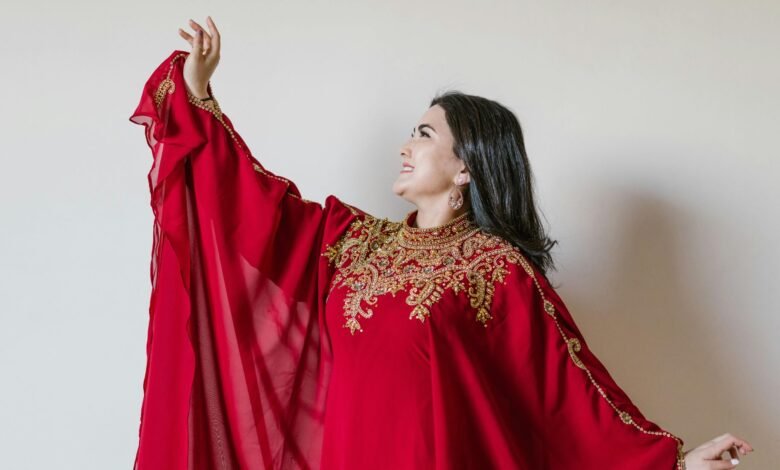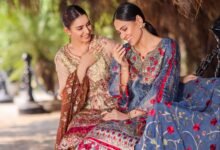How to Choose the Perfect Asian Suit for Any Occasion?

The perfect Asian suit for any occasion, choosing one can be both a delight and a daunting task, when considering the richness in variety that styles traditions have across Asian cultures. From a formal wedding to any vibrant festival or a sophisticated dinner, the right suit needs to be done with great care and consideration of several factors. In the modern world today, the conveniences associated with choosing the perfect attire have been widely improved by the advent of Asian suits online shopping.
Such a facility makes it possible to go through designs and fabrics right from within the comfort of one’s home, making it easier to find a suit that perfectly meets your needs. From the magnificent qipao with intricate embroidery to the majestic sherwani and flowing hanbok, each suit seeps into a particular cultural identity and attitude. Understanding the occasion, fabric choices, fit, and design options are essential to making an informed decision. Through these, Asian suits can provide all the details, customer feedback, and options that guarantee suitability for any event creation.
Know the Occasion and Dress Code:
While selecting an Asian suit, one must consider the nature of the occasion or event and what kind of dress code is there. For formal events like weddings and other important occasions, wear luxurious fabrics like silk or brocade, and traditional attire styles like the Chinese qipao or the Pakistani sherwani. These suits are elegant and beautiful, quite befitting the grandeur of the occasion. For less formal or lightly formal occasions consider relaxed but stylish options like Korean hanbok or minimalist Japanese kimono. At the same time, one is also cautious that the choice would respect and conform to the cultural meaning behind the occasion, based on respect and understanding.
Choosing the Right Fabric:
When making your Asian suit, choosing the right fabric makes all the difference in comfort and style. First, start by considering the time of the year and what kind of climate the event will be in. In the warmer parts of the world, light fabrics like linen or cotton will work very well since they are light and have good airflow. Heavier materials, such as wool or velvet, go well in colder climates since they will be warm and elegant. Also, consider comfort and wear when choosing fabrics that would look good for a long, continuous period of wear and can stand up to the stresses of the event. More traditional materials, like silk for Chinese suits or richly embroidered textiles for Indian outfits, will charm the aesthetic appeal of attire and secure authenticity, as well as the feeling of continuation with one’s heritage.
Perfect Fit and Tailoring:
Getting a good fit matters for an Asian suit. Due to unique cuts in such suits, a fitting must be done per your measurements. It should match perfectly with your body type. Therefore, consider getting measured to have one tailored to perfection. Tailoring may require an impeccable fit or to fulfil any specific preference. Most Asian suits, as offered by these tailoring houses, have provisions for making some changes, maybe in terms of fitting or even incorporating details that will reflect your taste. With these tailoring services, you are sure to enhance the comfort and appearance of the suit so that it not only fits better but also speaks to your taste and tradition within the suit.
Colours and Designs:
If there is a single key to choosing an Asian suit, that would probably be ‘balance’. Traditional colours and designs can lend an air of authenticity and even reverence to your get-up. On the other hand, modern adaptations might bring a fresh, more contemporary spin into the mix while honouring their traditional roots. Choose colours and patterns according to the occasion of the event and your style
so that they can best reflect your taste in the event. Deep reds, golds, and other rich and bold colours are more favoured for formal occasions, for they can be striking yet elegant. Softer tones with simple patterns fit for a casual or semi-formal event will look relaxed yet stylish for the occasion.
Read more: https://classroom6x.co.uk/balayage-hair-color-achieving-a-natural-sun-kissed-look/
Conclusion – Asian Suit:
In conclusion, a great Asian suit regardless of the occasion, is all about making a stylish and appropriate choice. First, be aware of the level of formality of the event and dress accordingly: a traditional kimono for some formal ceremony or a modern tailored suit for business. Of course, make sure that suit will also suit the season best by picking the right fabric and colour that speaks to your taste of fashion and style. The fit is important, so make sure the attire looks good on your body type for comfort and confidence. Accessories should be worn intelligently, respecting regional differences and personal taste.
You can blend the traditional with the modern and show respect for the cultural heritage while you present yourself immaculately for all occasions. The choice of an ideal Asian suit is going to be all about the quality of fabric, design, and details pertaining to any given occasion. Go for timeless designs that express your personality while ensuring comfort and fit. The use of tradition and modernity can be balanced to choose something which exudes elegance and confidence—sure to make a head turn at any event.

